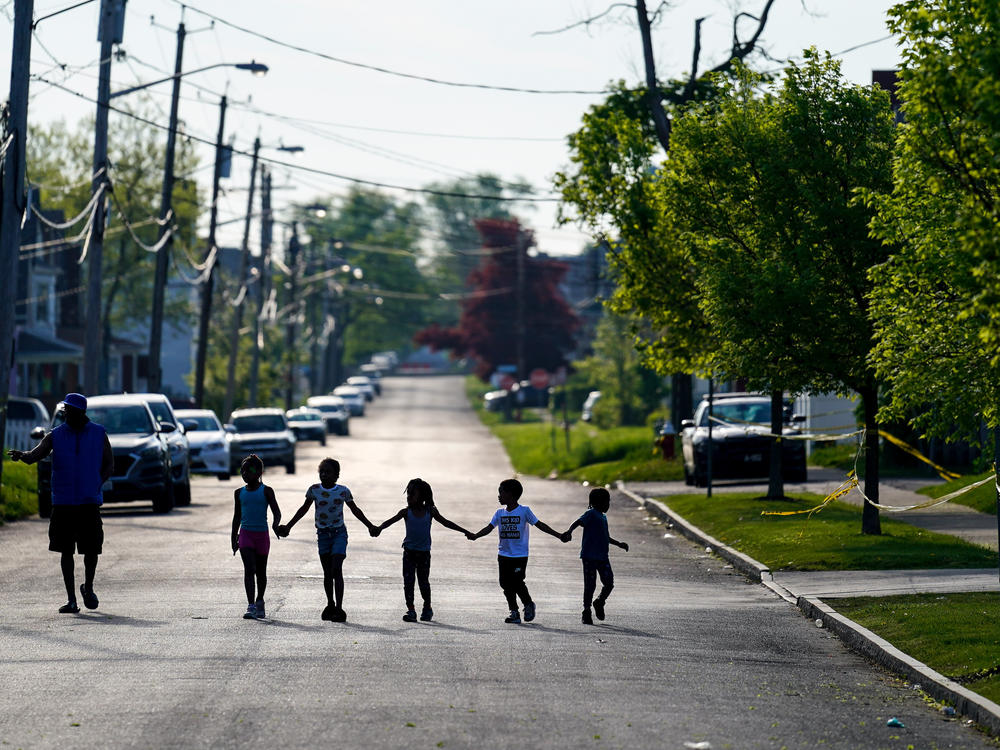Section Branding
Header Content
2 mass shootings — 1,700 miles apart but bound by startling similarities
Primary Content
In the span of less than two weeks, an elementary school and a grocery store more than 1,700 miles apart were shattered by gun violence. Uvalde, Texas, and Buffalo, N.Y., now both share the tragic loss of friends and family.
These two tragedies happened on separate ends of the country and yet, both share similarities: how the violence was carried out, certain aspects of the suspects, and the ease in which the weapons were accessed.
It's unclear as of now what the specific motive was in the Uvalde, Texas, shooter's mind. But the gunman responsible for the attack that killed 10 members of the Black community of Buffalo apparently chose the location specifically and that he was motivated by white supremacist ideology.
Though the motivations in these particular cases likely differ, the suspects of these shootings, and others like it, have a lot in common, according to James Densley and Jillian Peterson, co-founders of The Violence Project. Their research organization studies gun violence, mass shootings and violent extremism.
"Usually what's motivating these shootings is a element of self-hatred, hopelessness, despair, anger, that's turned outward to the world," said Densley, who is also a sociologist.
Connecting the two shootings is important, said Peterson, a psychologist.
"I think we're too quick to write things off because the motive is slightly different," she said. "It's the same trajectory over and over and over again. Just people get radicalized in slightly different directions, their anger points in different directions, but its roots are the same."
The shooters were both 18 and male
Salvador Ramos was 18 years old and a high school dropout, according to officials.
Payton Gendron, is also 18, and white. He turned to various websites during the pandemic, according to a document allegedly written by him, and said he was radicalized that way.
He threatened his high school last year, prompting a visit from the New York State Police.
Densley and Peterson said they see two kinds of age clusters of mass shooters: Men in their mid-40s for those who are workplace shooters and school shooters or those involved in other types of mass shootings between the ages of 15 and 24.
Of the 180 instances of mass shootings in the U.S. they've studied, they found that there are only two cases where women acted alone.
It's always men otherwise, Peterson said.
"We know that 18 is this kind of fragile age, this kind of coming of age where people tend to have mental health crises, or they may feel suicidal," she said.
These shootings are emblematic of that.
The shooters have "the desire to have that pain, and that anger be known to the world, to have us all watch and witness it, to hear their names, to see their pictures, to read what they've left behind for us to read. These are public performances meant for us to watch," she said.
Notably, in many places in the U.S., it's also the age they can legally buy their weapons of choice.
The weapons are AR-15-style and bought legally
Like many mass shootings before them, the gunmen in these two cases used an AR-15-style rifle both bought legally.
In everyday instances of gun violence, assault rifles are used less than 1% of the time, according to Densley.
"In mass, public shootings, like the ones we're talking about here, it's over 25%," he said.
This happens so often because mass shooters copy each other and these guns have become the weapon of choice, he noted.
"One way you can guarantee that people will talk about your crime is if you use the props that others have used in their own performances," Densley said.
Additionally, the Buffalo shooter wore body armor as he went into the Buffalo grocery store.
According to The Washington Post, Ramos in Uvalde "wore a vest used to store extra magazines — often used by tactical police units — without the armor plates that law enforcement officers typically wear."
The Violence Project found that at least 21 mass shooters over the last 40 years have worn body armor – the majority in the last decade.
Communities of color were targeted
It's unclear yet what was the motive in the Uvalde shooting. The town has a population of about 15,000 people, more than 80% of whom identify as Hispanic or Latino, according to data from the U.S. Census Bureau. And about 1 in 5 lives below the poverty line.
The majority of those shot at a grocery store in the East Side of the Buffalo were Black.
Residents of both areas say they are a tight-knit community.
"Gun violence, in general, tends to affect our most disadvantaged communities. Our communities of color," Densley said. "It's often the most vulnerable members of our society who are the ones dealing with these problems."
Copyright 2022 NPR. To see more, visit https://www.npr.org.




